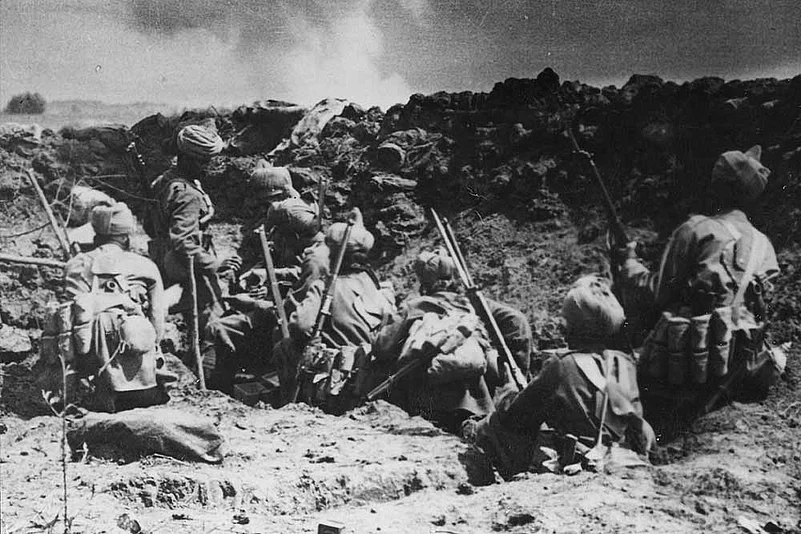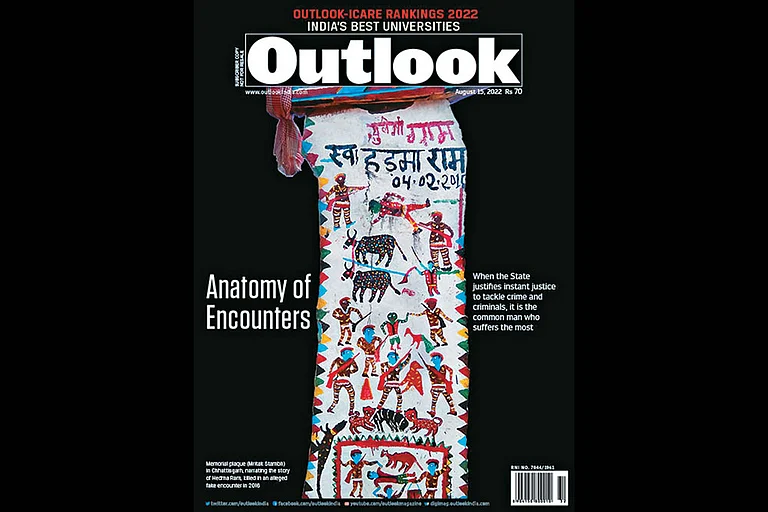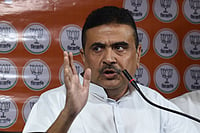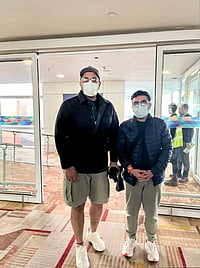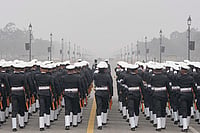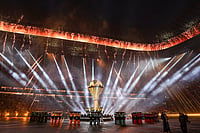Coming Of Airpower
Short notes on the Great War
In the early years of the war, flying corps of the belligerents had a few hundred aircraft each; they used them for tentative probes over enemy lines for reconnaissance, dropped (usually ineffective) bombs on enemy positions, and—living up to their reputation of ‘knights in the air’—duelled against each other. Things had changed by 1918. The Royal Air Force (the title for the separate air service was created in April, in place of the Royal Flying Corps) had over 2,000 planes, and sophisticated tactics. In the vital counter-attacks of 1918 that brought Germany down, it led the way by bombing rear installations and communications, carrying out strafing attacks on troops and efficiently directed the ‘creeping barrage’ by ‘Now Firing calls’. The age of offensives with ‘air support’ was born.
***
After 1919, the 1914-1918 conflict was known as the Great War. Only after 1945 did it come to be known as the First World War. In the new millennium, historians categorise the First World War as a der totale krieg (Total War) due to an almost total mobilisation of societies of the big powers. India played a crucial role in sustaining the British empire during the War by providing manpower (both military and labour), animals and economic resources. Under British officers, several Indian Expeditionary Forces (IEFS) fought the Central Powers in Europe, Africa and Asia.
Indian Army and Military History
The Indian army was part of the army in India, which also included British army units stationed on the subcontinent, and Imperial Service Troops belonging to India’s princes. The Indian army had 1,80,000 long service volunteers. In the Indian regiments, below the British officers were Indian officers, known as the Viceroy’s Commissioned Officers. They were mostly promoted from the ranks and constituted a crucial link between Indian troops and British officers. Most Indian recruits were from the ‘martial’ communities like Punjabi Muslims, Sikhs, Garhwalis and Gurkhas. The recruits often were illiterate younger sons of small peasant families who joined due to pay, pension and gratuity which supplemented the family income.
By November 1914, the Indian army had been deployed in Flanders, East Africa and Mesopotamia (Iraq). By October 1918, it had fought in almost all the theatres, extending over a wide arc from Singapore in the east to France in the west. A total of 1.7 million Indians served, including 1.1 million combatants and 6,00,000 non-combatants.
However, historians have been unkind to the Indian army’s role. British and American scholars consider the Indian army as a minor footnote in their account of the gargantuan struggles between the Allied and German armies in Europe. For them, the Indian army was a colonial police force not suited for conducting large-scale attrition warfare. And Indian civilian historians have never shown much interest in matters military. Sepoys and sowars fighting and dying for the alien colonial regime do not go well with the dominant discourse which emphasises the anti-colonial struggle. Higher educational institutions are also not willing to sponsor military history for fear of militarising India’s culture. India still lacks an official history of the First World War. The Indian army’s histories usually utilised retired military historians to write ‘drums and button’ narratives, which are not taken seriously by professional historians. This article attempts to address the above-mentioned historiographical slip. This essay takes a geographical approach and moves in a counter-clockwise direction.

Eye on a periscope trained on enemy trenches, an Indian soldier in France does sentry duty
France
Some 85,000 Indian troops served in France. Most battalions were neither equipped with heavy artillery, mortars and machine-guns, nor were trained to conduct trench warfare on a large scale, which unfolded in France from late 1914 onwards. Worse, Indian soldiers lacked warm clothes and proper medical infrastructure. Nevertheless, in late October and early November 1914, Indian units were deployed at the First Battle of Ypres. Time and again, the Indians held firm against the vaunted Kaiserheer.
In December 1915, Indian infantry battalions were sent away from France. This move is attributed to three things: feeble fighting performance, casualty replacement problems, and poor morale. The Indian battalions in Flanders did suffer problems of casualty replacement due to India’s lack of pre-war infrastructure to replenish large losses. But by summer 1915, the problem had been overcome. Indian units did suffer from low morale. But even British and French units suffered from malingering and battle fatigue. Indian troops complained they were not paid enough; they were angry at the policy of redeploying those recovered from wounds to the front; homesickness was rife. Still, there was no Indian mutiny on the Western Front, but in 1917, the French and Russian armies were racked by mutiny.
Gallipoli
In April 1915, two Indian mountain batteries manned by Punjabi Muslims and Sikhs landed on the Gallipoli Peninsula. By May, the 29th Indian Infantry Brigade, comprising the 14th Sikhs and three Gurkha battalions, held the line at Cape Helles. At the end of 1915, the Allies evacuated Gallipoli. About 1,350 Indian soldiers died there.
East Africa
Some 17,500 Indian troops fought against the Schutztruppe (African auxiliary troops under German officers). On November 2, 1914, Indian troops attacked the German-held Tanga port. The Indian battalions were inexperienced. Despite numerical superiority, they panicked. By early 1916, Indian units were trained in bush warfare and were issued with light machine-guns and grenades. From then onwards, Indian units’ morale did not fail, despite inadequate food and medical support. Of the 4,500 Indian casualties in East Africa, the majority were from diseases like malaria and dysentery.
Egypt and Palestine
By the end of 1914, the 10th and 11th Indian divisions were stationed in Egypt. Initially, Indian troops were ordered to protect the Suez Canal. During the Battle of Romani (August 1916), the Bikaner Camel Corps coordinated its reconnaissance activities in the desert with a squadron of aircraft. By late 1917, Yeomanry regiments in Palestine were replaced with Indian cavalry regiments from France. On June 27, 1917, Gen Edmund Allenby took command in Egypt. He noted: “The Indian cavalry have used the lance with good effect on several occasions.”
Mesopotamia
The largest number of Indian soldiers fought in Mesopotamia. On October 16, 1914, the 16th Indian Brigade sailed from Bombay for the Persian Gulf. It captured Basra to protect the Anglo-Persian oil pipelines. By April 1915, the IEFD (Indian Expeditionary Force ‘D’) had expanded into two Indian infantry divisions and one cavalry brigade. Major-General Charles Townshend then decided to advance to Kut. After the indecisive Battle of Ctesiphon (Suleiman Pak), Townshend first retreated to Lajj and then back to Kut on December 4, 1915, where he was beseiged by Turkish forces. Breakdown of the IEFD’s logistical infrastructure led to the tragedy at Kut. In January 1916, Lt Gen Fenton Aylmer, with some 19,000 men, attempted to relieve the Kut garrison. Rain and mud along with frontal assaults against entrenched Turkish positions resulted in the failure of Aylmer’s relief attempt. On April 29, 1916, Townshend surrendered with 2,900 British troops, 7,200 Indian soldiers and 3,248 Indian followers. Gradual weakening of the Ottoman army, along with improvement of the supply scenario (development of Basra harbour, use of steam boats and building of railways), resulted in the advance of the British and Indian units from late 1917 to Baghdad. By this stage, infantry-cavalry cooperation in outflanking manoeuvres against the retreating Turks became a cardinal feature of the Indian army.
The Long-Term Impact
India’s war effort proved to be a double-edged sword for the British. The Indian army registered a high learning curve as far as combat techniques were concerned. Conscription was never applied in India for political reasons and due to racial prejudices of British officers. India underwent a measure of industrialisation due to the demands generated by war, its ordnance factories’ output expanded and new manufacturing technology was introduced. Military participation and experience abroad, along with material contributions for the war effort, gave soldiers exposure, expanded their horizons and raised political expectations. Indian soldiers, after serving abroad, became conscious of the necessity of political freedom and economic development back home. Indian soldiers demanded better medical attention and higher pay, like European soldiers. Letters written by sepoys stationed in France emphasised how backward India was under British rule. The threat of pan-Islamism haunted the British both during and after the Great War, and Sikh soldiers were influenced by Ghadar activists. Muslim soldiers, due to German and Turkish propaganda, were unwilling to fight the Ottoman Caliph. In February-March 1915, Sikh and Muslim soldiers of the 5th Light Infantry stationed at Singapore mutinied.
In order to reduce overdependence on the traditional ‘martial races’, whose loyalty seemed to be strained, the British experimented with recruiting new communities. The 49th Bengali Regiment was set up in Calcutta and sent to Mesopotamia in late 1917 but was disbanded due to spread of ‘seditious’ political ideas among Bengalis. Worse, Indian soldiers and ‘moderate’ intellectuals demanded the opening up of the commissioned officer corps for Indians. Initially, most Indians aided the Raj’s military effort in the hope that they would be rewarded with independence after the war. Gandhi organised the ambulance corps. Subhas Chandra Bose applied to the 49th Bengalis (but was rejected due to poor eyesight) and the poet Nazrul Islam joined the unit.
However, British failure to satisfy the growing demands (economic and political) alienated sections who supported the War from the Raj. One can argue that without the growing discontent due to rising prices after 1918 and angry, demobilised soldiers, neither the Third Afghan War (1919) nor the first Gandhian mass movement (Rowlatt Satyagraha) would have been possible. The imperial legitimacy was undermined; the first steps towards decolonisation had already been taken.
Kaushik Roy is professor at the Department of History in Jadavpur University, Calcutta, and, Global Fellow, Peace Research Institute Oslo, Norway






